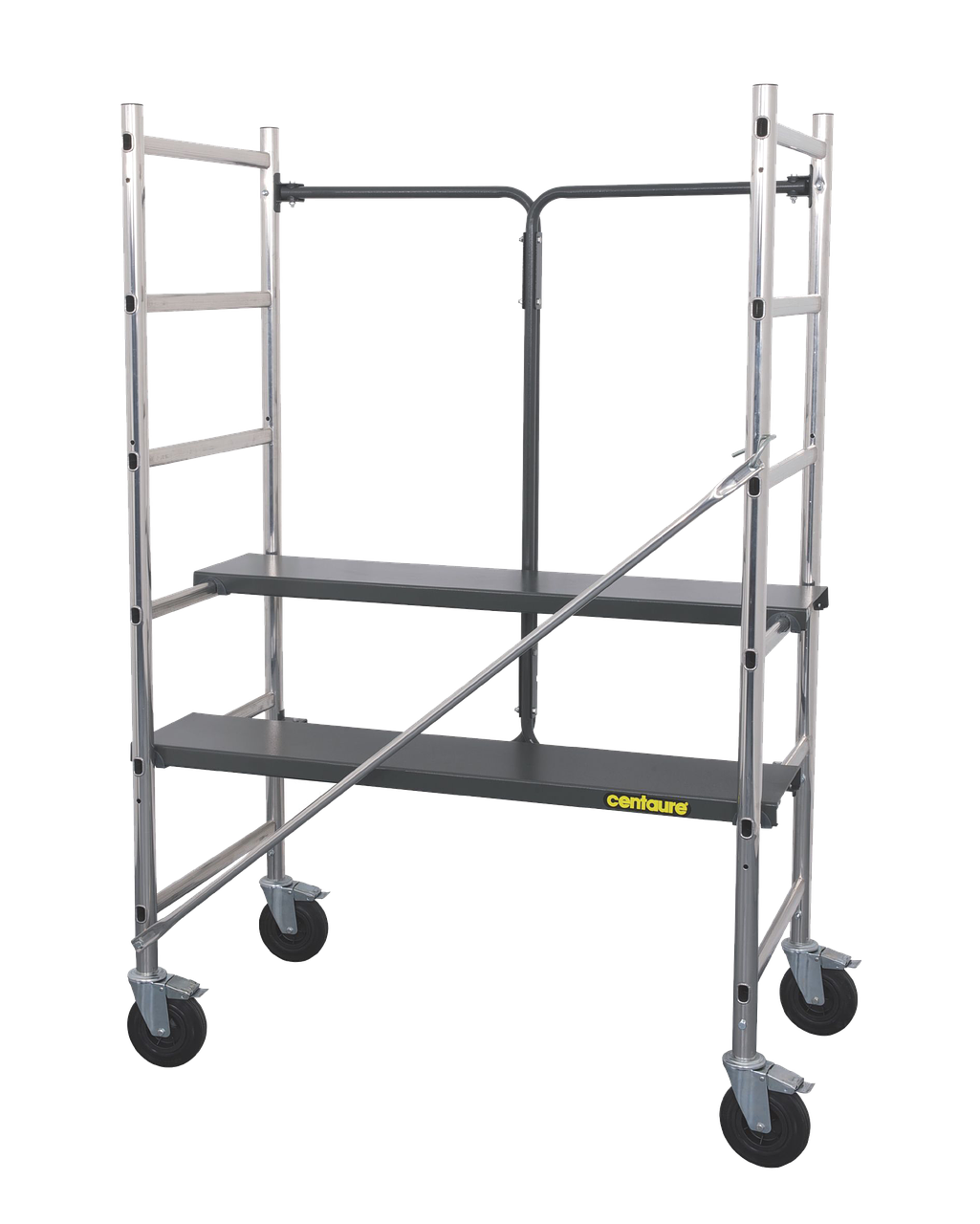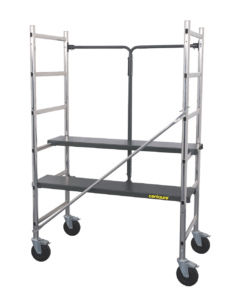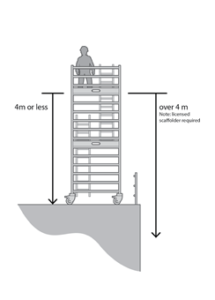
Posted - February 19, 2022 | By admin

A tower scaffold is an independent scaffold consisting of four vertical standards connected longitudinally and transversely or two frames in plan connected transversely to create a scaffold of one bay. It may also have an extra, short stabiliser bay or outriggers to increase stability.
A mobile scaffold is a tower scaffold mounted on wheels (see Figure 1).
Manufacturers and suppliers must provide information about how to use and erect mobile scaffolds safely. If a scaffold is to be altered contact the manufacturer or supplier for guidance. Prefabricated mobile scaffolds should be erected in accordance with manufacturer’s specifications.
A licensed scaffolder is required for the erection, alteration or dismantling of a tower or mobile scaffold where there is a risk that a person or object could fall more than 4 metres from the platform or the structure.
This means that if a scaffold that is less than 4 metres in height is located adjacent to, for example an excavation, a licensed scaffolder may still be required (see Figure 2).

Often tower and mobile scaffolds will not require a licensed scaffolder to erect or dismantle them as there is no risk of a fall greater than 4 metres. However, the work should still be carried out by a competent person.
The following control measures should be considered for tower and mobile scaffolds:
Keep wheel brakes locked at all times unless moving the scaffold.
Work should not be done from tower or mobile scaffolds located on balconies or raised areas unless the scaffold is stable and secure or fixed to the structure to prevent movement.
Before moving or relocating a scaffold check:
Never move the scaffold in windy conditions.
Scaffolds with components that are not permanently fixed or which are not rated for lifting should only be moved in frames designed to lift individual components
e.g. stillage’s.
If lifting a scaffold by crane, prepare a lifting plan outlining safe lifting points and how loose components like base jacks should
be secured. Sling the scaffold at the point most likely to maintain stability and prevent dislodgment of scaffolding components.
The load should be slung by a licensed dogger or rigger and manoeuvred in a way that ensures the load remains stable.
A crane should not be used to lift aluminium mobile scaffolds because the scaffolding components may fail.